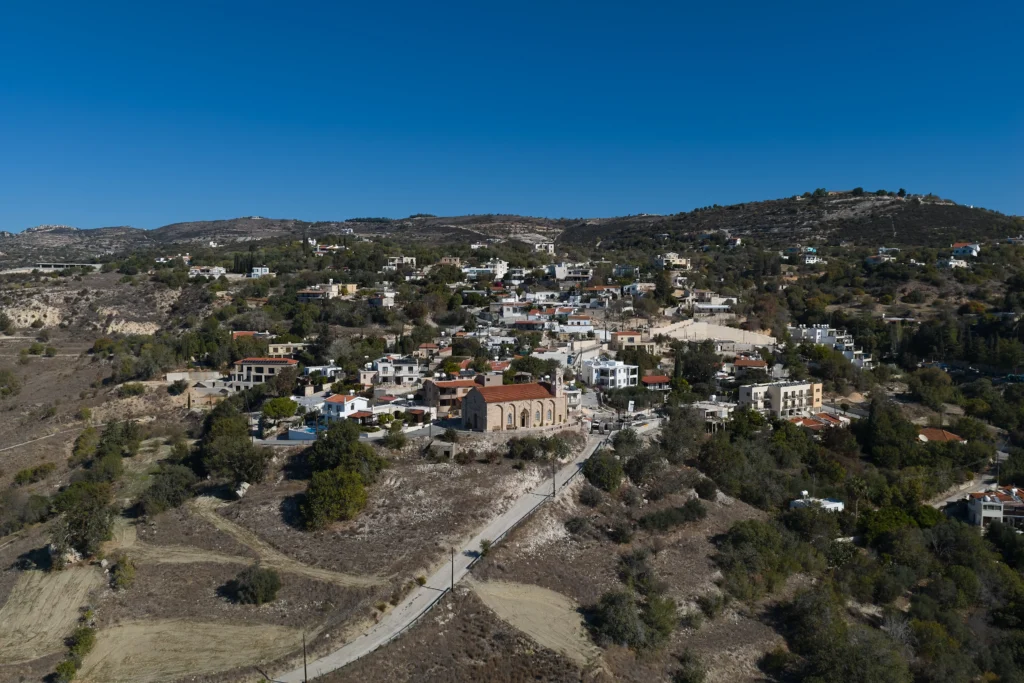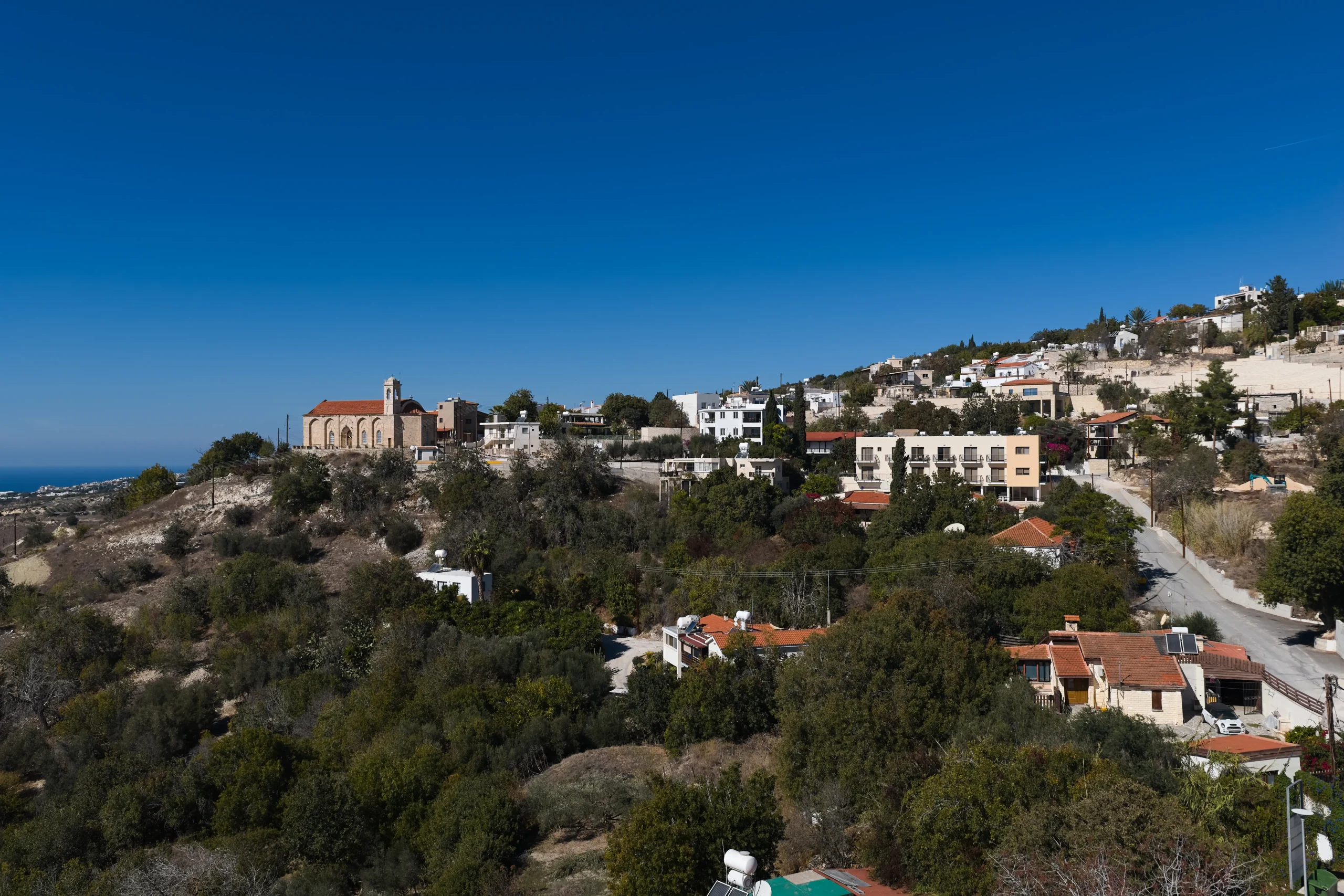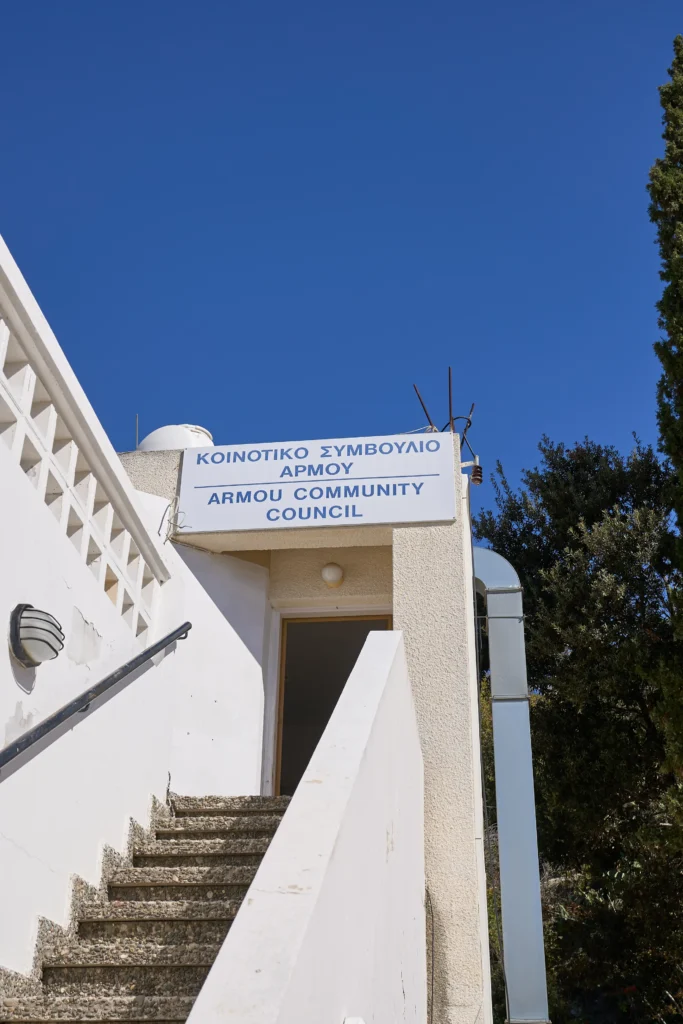
Discover the Heritage of Armou
Connecting Residents and Visitors Through Shared Stories
History of Armou
Armou is built on the slopes of the mountain, north of the city of Paphos, at an altitude of 350 meters above sea level and at a distance of 4 kilometers from Paphos.
It offers an incredible view of the sea, from Petra tou Romiou to Coral Bay.
It is located in a picturesque and lush green environment, with the Church of Saint Barbara, built on the village’s terrace, dominating the area.
The region has been inhabited since pre-Christian times, and archaeological finds from excavations are displayed at the Paphos Museum.
The village took its name from the first settler of the area, who was called Armos.
Another view is that the name comes from the word “armos” (joint). The village is built on a slope that extends into a valley. A slope like a joint and projection, it connects and ties the mountain with the valley.
A third version, according to mythology, is that the village’s name comes from the “chariot” of the goddess Aphrodite, with which the goddess visited the area.
On old maps, the village is marked as “Armo.”
The population of the village in 1881 numbered 245 inhabitants, increasing to 310 in 1901, 369 in 1921, and 469 in 1946.
In 1982, due to urban migration, the inhabitants were 285. According to the recent census in 2010, the population reached 800, of whom 650 are permanent residents. Owing to its privileged geographical position, natural beauty, and profound tranquility, the village has attracted many Cypriot and foreign residents.
Apart from the Church of Saint Barbara, there is the ruined chapel of Saint George, where only a few frescoes remain on the walls, and the ruins of the chapels of Saint Abakieros, Saint Demetrianos, Saint Tychon, and Saint Mavri. Recently, the chapel of Saint Marina was also built in a spectacular area with panoramic views.
Additionally, panoramic views of Paphos and its suburbs can be enjoyed from the Theas point, located high in the village, and from the Church of Saint Barbara.
A notable landmark is the Kato Vrysi Lake, located at the foothills of the village.
Bringing Together Armou’s Community Every Day
The Armou website serves as a hub to celebrate our heritage and community spirit, sharing our story, culture and tradition with the world

Explore the Rich Heritage of Armou Village
Learn more about the points of interest of our village!
Armou Center
The Village Square is Armou’s social heart. It holds a small plaza and seating, and is flanked by the community café/tavern (Agios Charalambos) . Each Easter Monday, the square hosts public games, music and theatre as part of the traditional festivities – one of the year’s liveliest times. Otherwise, the square is quiet; villagers gather there for coffee or dinner at the tavern. The square also fronts the Community Council office.
Saint Barbara Church
Built in 1908, this beautiful stone church stands proudly at the village’s center. It’s dedicated to Saint Barbara, celebrated each year on December 4. Architecturally it is a modest stone church common to rural Cyprus. The interior has traditional Orthodox iconography. It is actively used during major festivals; at Christmas and Easter all former villagers often return to attend services
Agia Marina Chapel
A peaceful little chapel on the edge of the village, Agia Marina invites quiet reflection and a moment of prayer in a serene countryside setting.
Saint Tychonas Chapel
As in many Cypriot villages, Armou’s cemetery includes a small chapel, Saint Tychonas, — a tranquil spot where families pay respects and light a candle for loved ones.
Old School
Though no longer in use, the old school building stands as a symbol of the village’s history and its commitment to education through the years.
Agios Charalambos Tavern
The community center doubles as the beloved Agios Charalambos Tavern, where locals and guests share authentic Cypriot dishes, laughter, and warm hospitality.
Olive Mill
Armou’s history is steeped in olive cultivation. The old village press recalls the days when families brought their harvest here to make golden olive oil.
Viewpoint
Armou lies on a hillside overlooking Paphos. To take advantage of the views, a viewing platform was recently constructed on a nearby rise. From the platform one can see Paphos city below and the Mediterranean beyond. In spring the hillsides around Armou bloom with wildflowers. The new platform is about the size of a large picnic table and offers panoramic vistas. On a clear day it is a lovely spot for photographs of Paphos and the coast.
Old Fountain
This charming stone fountain once provided the village’s water and remains a quiet reminder of simpler times in rural life.
Water Reservoir
Armou’s reservoir serves as both a practical resource and a scenic feature, surrounded by nature and overlooking the valley below.
Want to know more or ask questions?
Contact us using the form below or by calling us so that we can help you resolve all issues!


